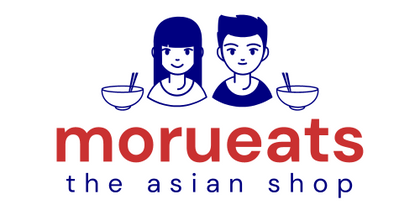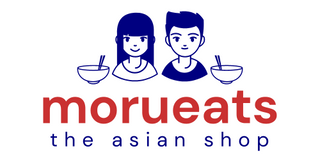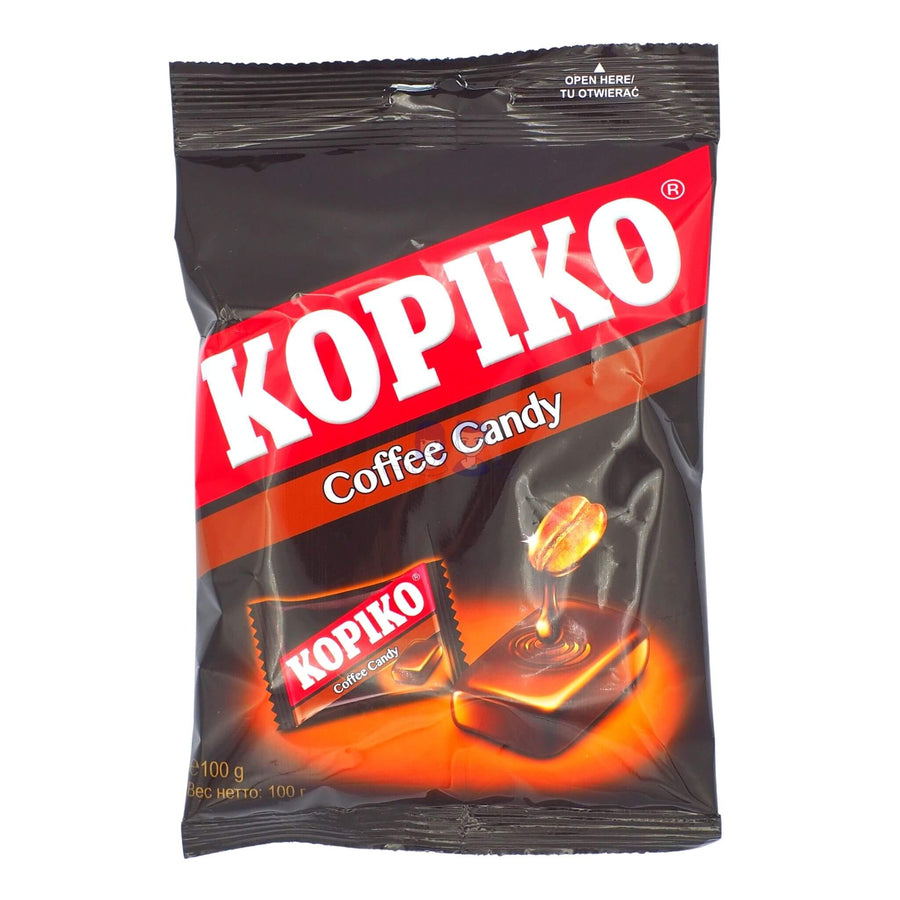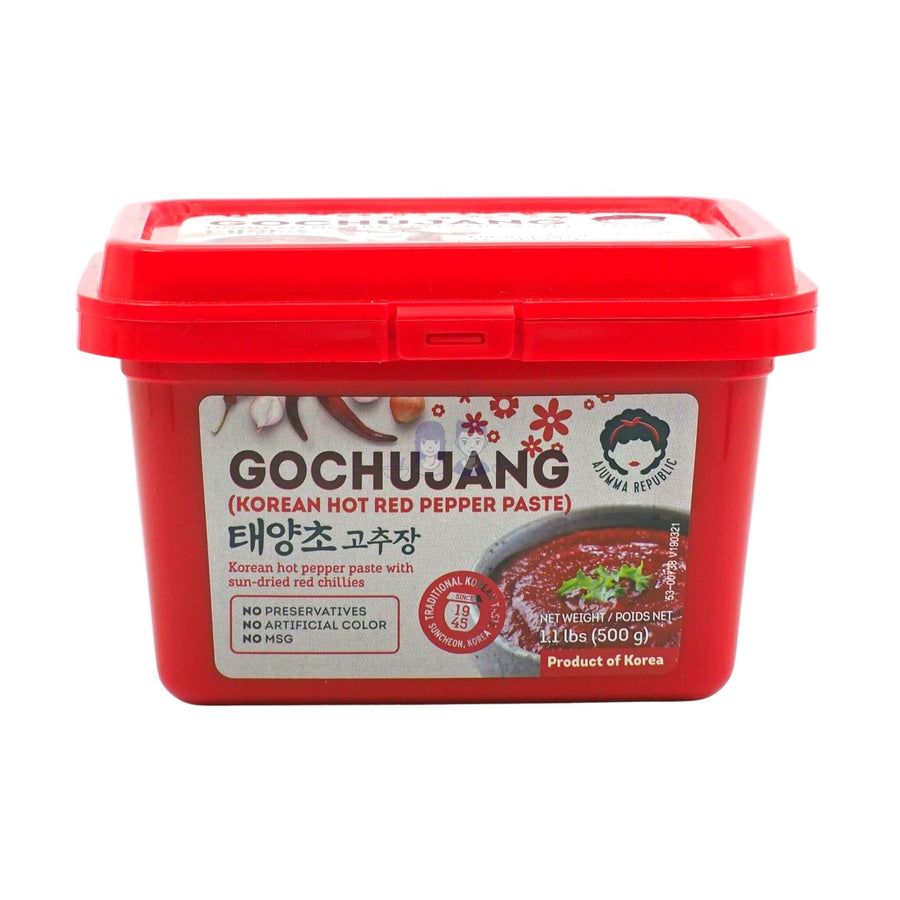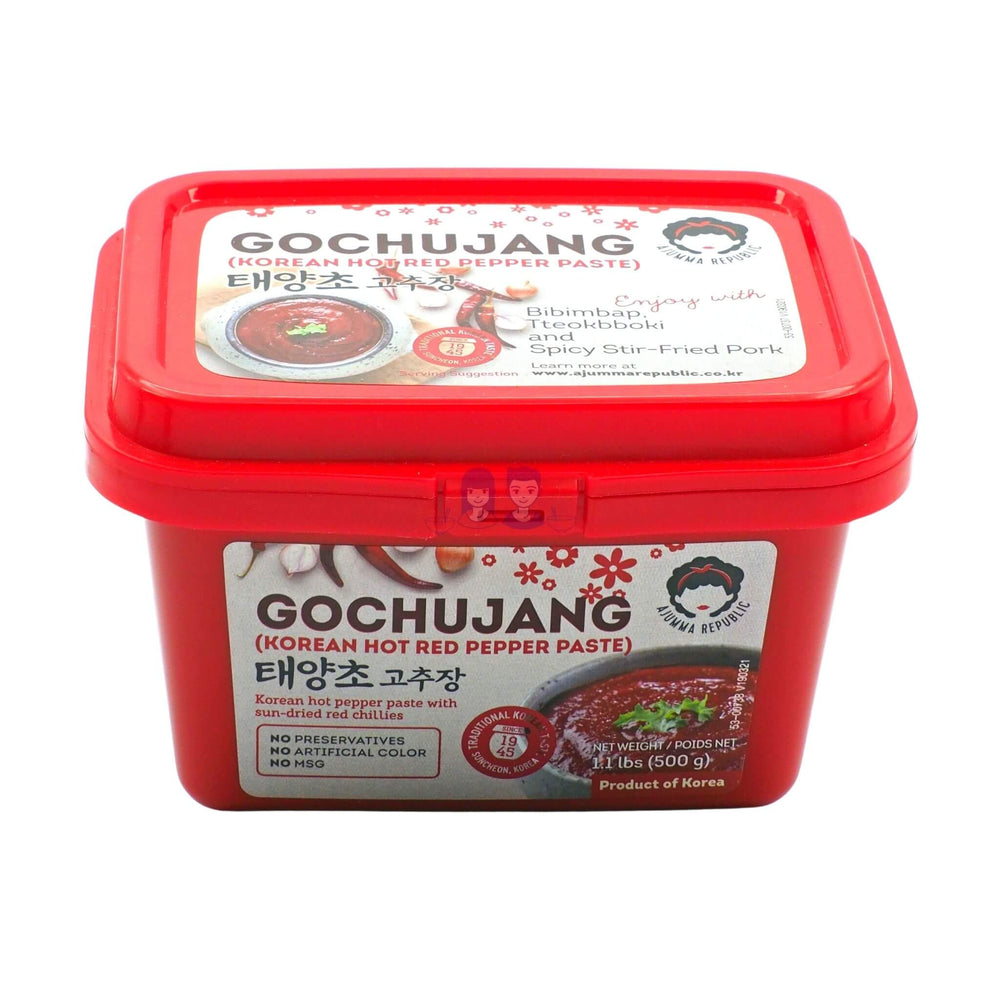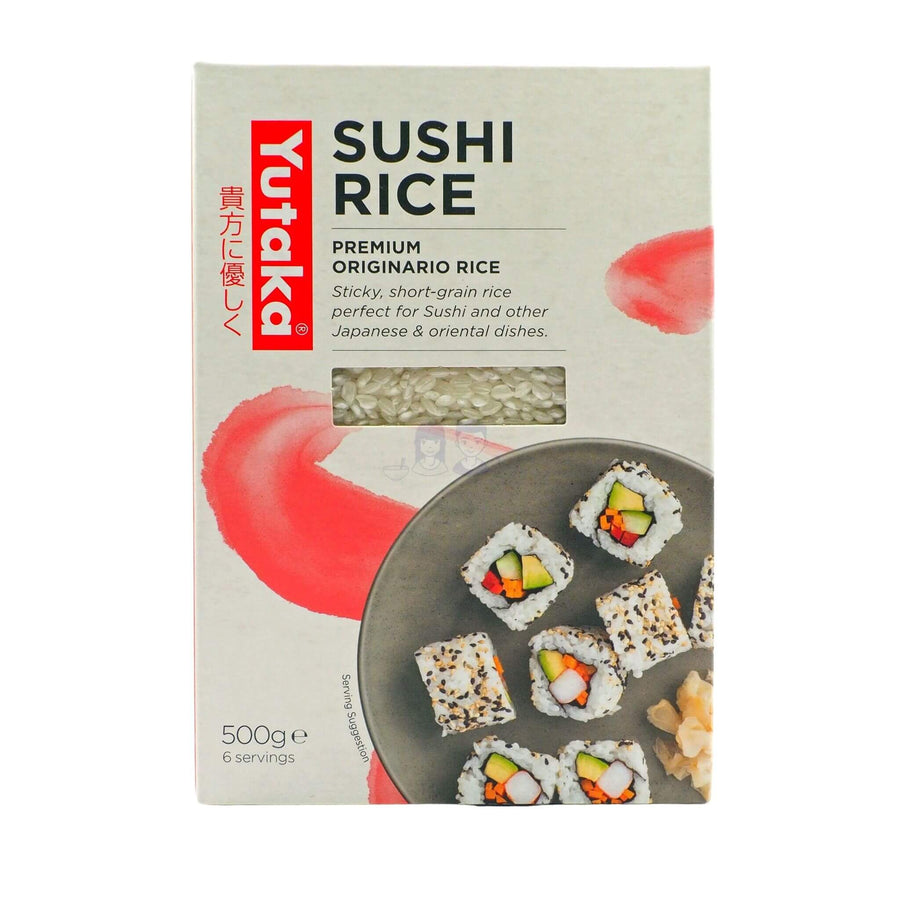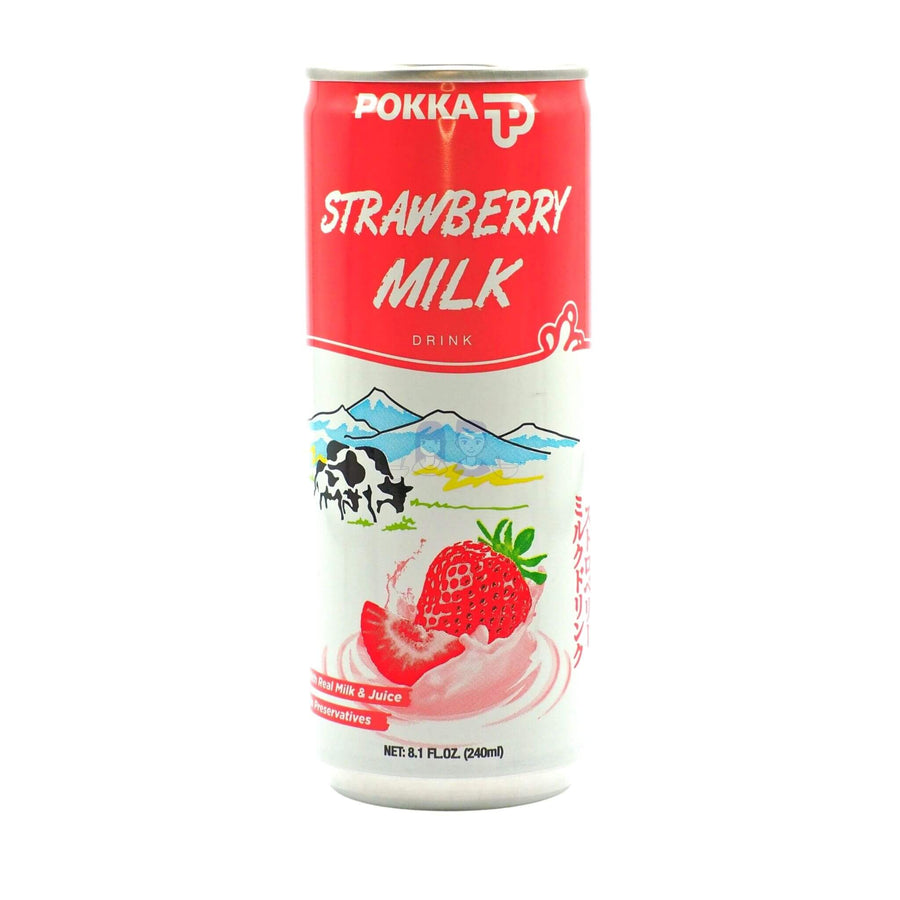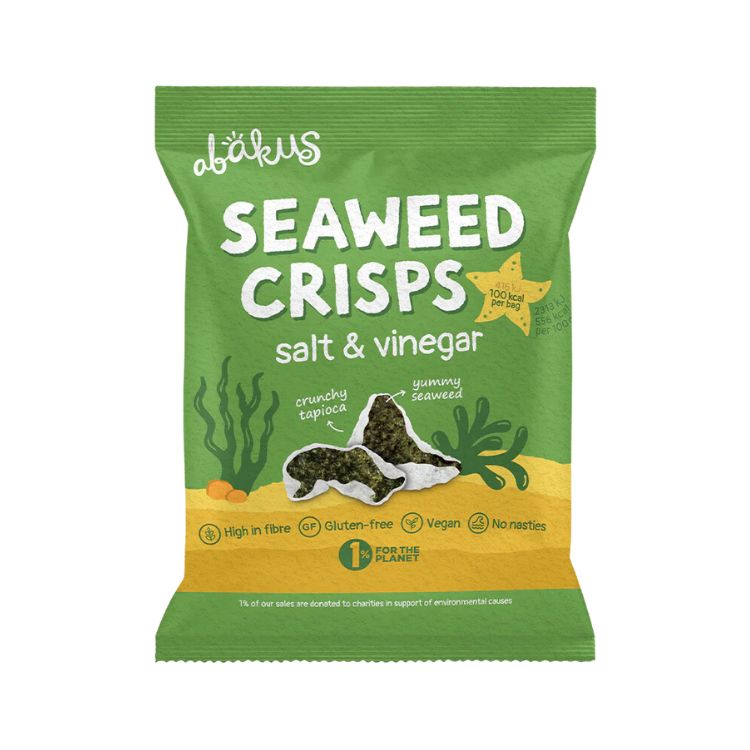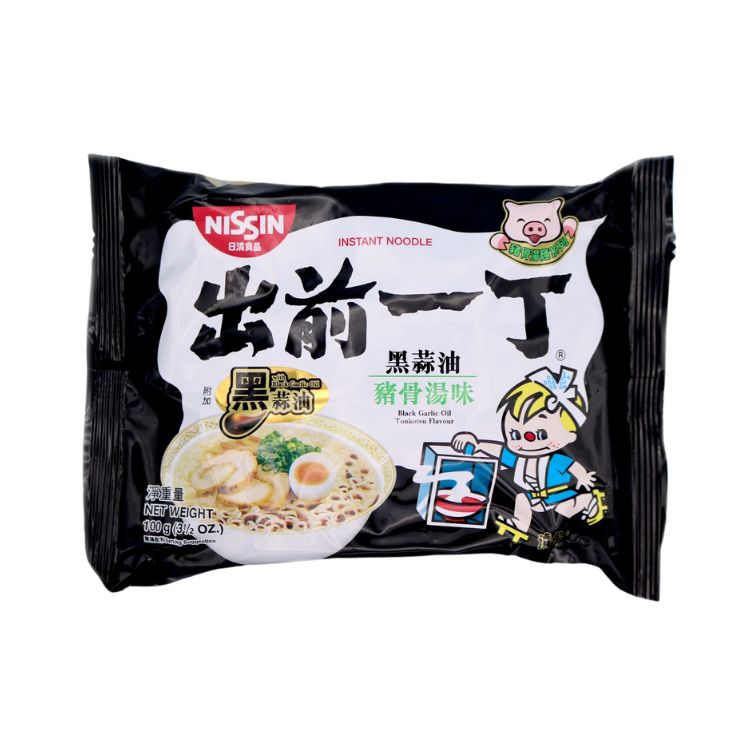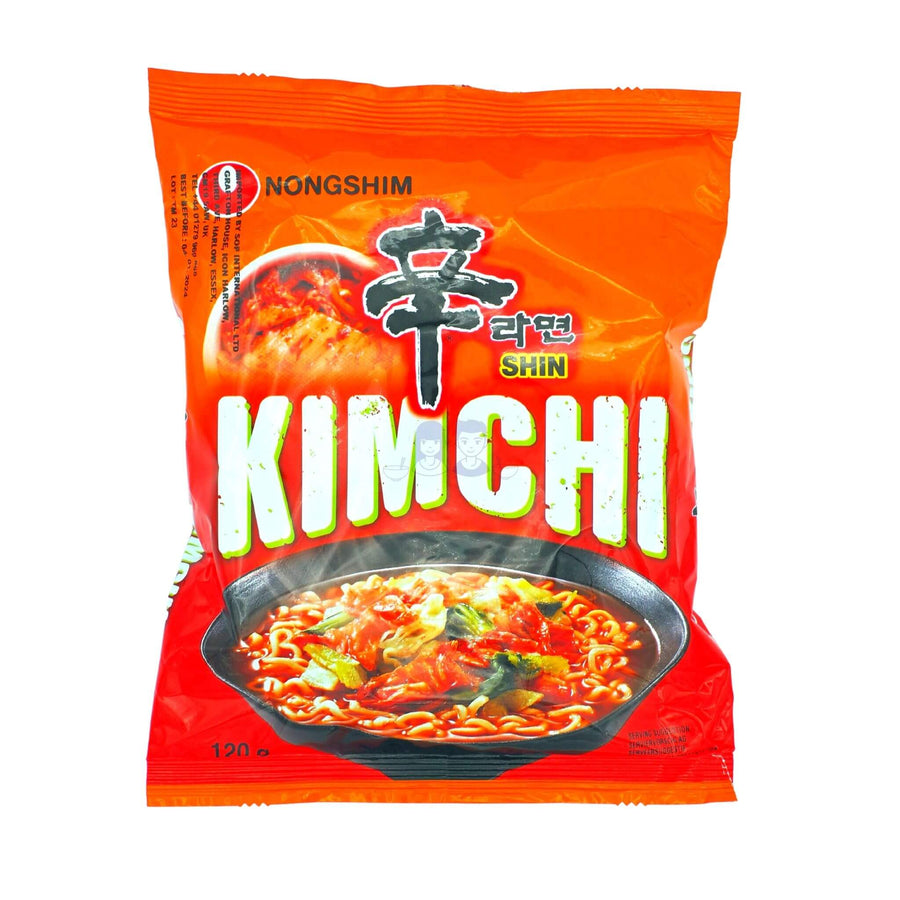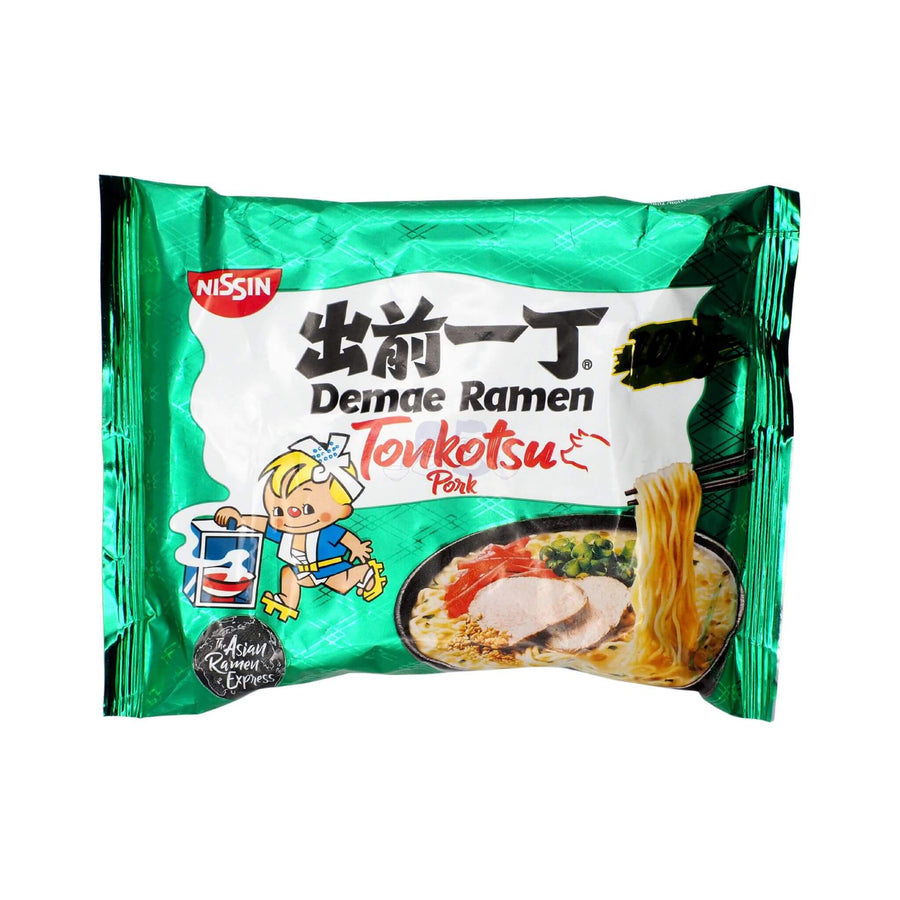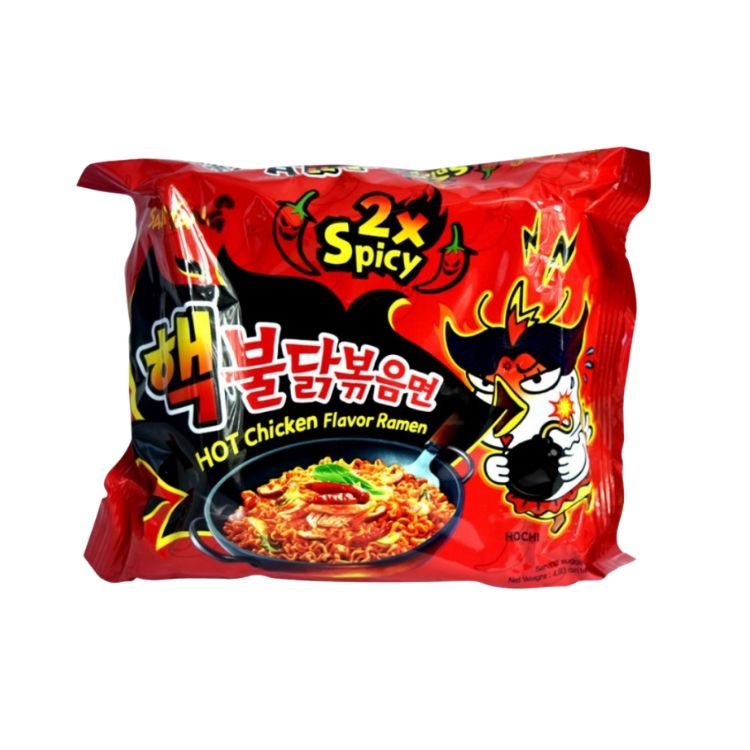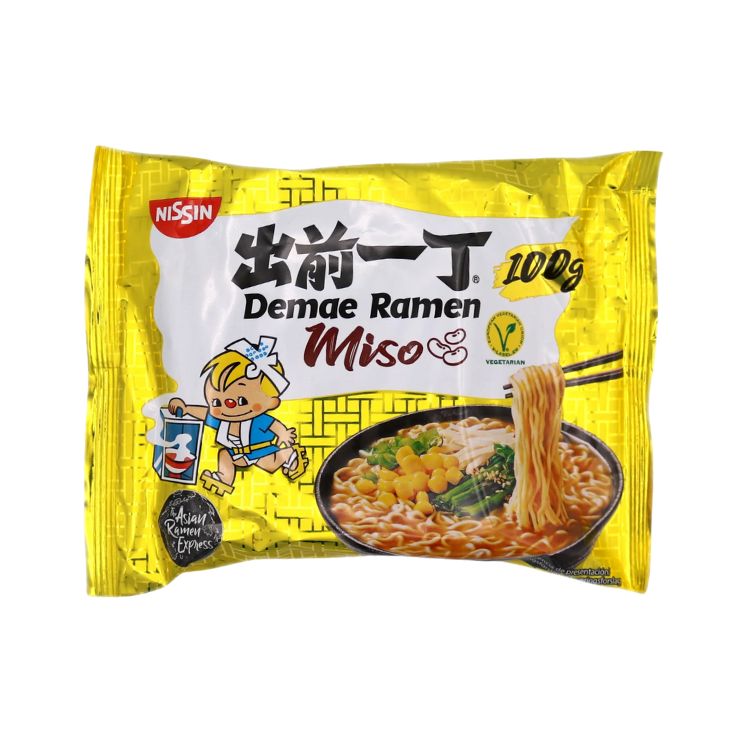The Best Types of Asian Noodles: From Ramen to Pad Thai & Beyond
Asian noodles have been a cornerstone of the region's cuisine for centuries. From the comforting bowls of Ramen in Japan to the fiery bowls of spicy noodles from China, the best Asian noodles showcase a wide variety of flavours, textures, and cooking techniques.
In this guide, we will explore the history of noodles, popular types of Asian noodles including several of our favourites, their cultural significance across Asia, cooking tips, and innovative takes on Asian noodles.
→ Shop now: Our handpicked range of Asian noodles
What are noodles?
Noodles are made up of long, thin strips or strings of dough that get their shape from being rolled flat and cut, stretched or moulded.
The core ingredients are usually flour - derived from wheat, rice, or other grains - mixed with water. Once prepared, they can be boiled, fried or steamed.
Noodles are a staple food in much of East and Southeast Asia, and their influence can also be found in cuisines outside Asia such as the famed Italian pasta.

Where do noodles come from? The history and origins of noodles
For the earliest records of noodles, we have to go back more than 4,000 years to ancient China. Here, in the fertile basins of the Yellow River, the first evidence of noodle-consumption emerges from the contents of a clay bowl, supporting China's claim to be the birthplace of this universally loved dish.
These simple strings, crafted from dough and water, soon began an epic journey, transcending their Chinese origin, spreading across the continent, and eventually the globe.
As Ancient dynasties rose and fell, noodles found themselves at the crossroads of historic trade routes such as the Silk Road. Travelling merchants and explorers carried them across borders, leading to a beautiful mixing of culinary techniques, ingredients, and flavours.
Beyond trade, cultural exchanges played an instrumental role in the noodle's evolution. Asian festivals, religious ceremonies, and traditional feasts helped forge noodles as symbols of longevity, prosperity, and unity.
Main noodle types by primary ingredient
Similar to rice, there are numerous types of Asian noodles out there. One simple way to categorise them is through their primary ingredient.
Wheat noodles
Wheat noodles are one of the most commonly found noodles across Asia and include the likes of Ramen and Udon. We personally love their chewy texture that's great for soaking up sauces and broths beautifully.

→ Shop now
Rice noodles
Rice noodles, often referred to as rice sticks or vermicelli, are made from rice flour - making them gluten-free - and can be thin or wide. Rice noodles are popular in Southeast Asian cooking in dishes such as Pad Thai and curries.
Cooking Tip: To keep rice noodles from sticking together, soak them in warm water until they soften, then briefly cook them just before adding to your dish.

→ Shop now
Egg noodles
Made from wheat, eggs and water, egg noodles have a rich, yellowish-colour along with a springy texture. Egg noodles are versatile and commonly found in stir-fries and soups.

→ Shop now
Buckwheat noodles
Best epitomised by Soba, buckwheat noodles have a nutty flavour, and are often served cold with a dipping sauce or hot in a broth.

→ Shop now
Glass noodles
Glass noodles are primarily made from starches like mung bean, sweet potato, or tapioca. They are translucent, have a unique gelatinous texture as well as the ability to absorb flavours. This makes them a versatile ingredient in various Asian dishes, ranging from salads and stir-fries to soups and spring rolls. One of our favourite glass noodle dishes is Japchae from Korea.

→ Shop now
Konjac noodles
Konjac noodles are often referred to as "shirataki" noodles. They are made from konjac yam, which gives them a translucent appearance and gel-like texture. With almost no calories and being high in fibre, we find them a convenient noodle choice when looking for a low-carb alternative.

→ Shop now
Regional Variations of Asian Noodles
Another key way to distinguish noodles is through the countries and cuisines they are most commonly used in. Each country in Asia boasts a distinct noodle tradition, serving both as a showcase of its culinary prowess and a glimpse into its cultural essence.
Types of Chinese noodles
- Chow Mein: Pan-fried noodles combined with a variety of ingredients, typically meats and vegetables, in a savoury sauce, resulting in a delightful crunch for some varieties.
- Lo Mein: Soft, boiled noodles that are quickly stir-fried with ingredients and a flavourful sauce, offering a more flexible texture compared to Chow Mein.
- Dan Dan Noodles: Originating from Sichuan cuisine, these noodles carry a spicy, savoury punch, combined with minced pork or beef and often topped with preserved vegetables.

→ Shop now
Comparison: Chow Mein vs. Lo Mein
While both chow mein and lo mein are beloved and well-renowned Chinese noodle dishes, they differ significantly in preparation and texture. Understanding these differences can help you choose the right dish to satisfy your next noodle cravings.
-
Chow Mein: The noodles are partially boiled, then stir-fried until they become crispy. This results in a dish with a delightful crunch, that combines well with vegetables and proteins in a savoury sauce.
-
Lo Mein: The noodles are fully boiled until soft and then tossed with sauce and ingredients. Lo mein has a softer, more pliable texture compared to the crispiness of chow mein.
Types of Thai noodles
- Pad Thai: One of the most popular Thai dishes and a harmonious fusion of sweet, sour, spicy, and umami flavours. This stir-fried noodle dish combines tamarind, peanuts, and proteins like shrimp or tofu for a creative mix of Thai tastes.
- Pad Kee Mao: Aptly named "Drunken Noodles", this dish, with its bold, spicy flavours and wider rice noodles, is believed by some to be the perfect remedy after a night out.

→ Shop now
Types of Japanese noodles
- Ramen: There are several types of ramen noodles, with each region of Japan boasting its own version. At its core, ramen combines noodles with a flavourful broth (often pork or chicken-based) and various toppings, such as char siu pork, bamboo shoots, and seaweed. If trying Ramen for the first time, we would suggest trying the Tonkotsu variety, which contains a rich pork-based broth.
- Udon: These thick, chewy noodles are versatile, finding their place in both hot broths like Kake Udon or cold dishes with a side dipping sauce. If you like chewy food, then you will love udon.
- Yakisoba: A street food favourite, these pan-fried noodles are tossed with bite-sized pork, vegetables, and a distinct, sweet-savoury sauce, then often topped with pickled ginger and seaweed.

→ Shop now
Types of Vietnamese noodles
- Pho: One of the most iconic Vietnamese dishes; a soul-soothing Asian soup made from a meticulously prepared broth (often simmered for hours), thin rice noodles, and slices of beef or chicken. Fresh herbs and bean sprouts are added for a final touch.
- Bun Bo Hue: A central Vietnamese dish known for its spicy broth and rounded noodles. The lemongrass-infused soup often contains both beef and pork.
- Cao Lau: Exclusive to Hoi An, this dish's chewy noodles, locally sourced greens, and crispy pork croutons showcase the historical port town's culinary heritage.

→ Shop now
Types of Korean noodles
- Japchae: A celebration dish often reserved for special occasions, it combines translucent sweet potato glass noodles with stir-fried vegetables and meat, all coated in a slightly sweet, savoury sauce.
- Bibim Guksu: A cold dish that's perfect for summer, these thin noodles are slathered in a spicy, tangy gochujang-based sauce.
- Naengmyeon: Originating from North Korea, this cold noodle dish can be served in a tangy iced broth or mixed with a spicy sauce, making it a favourite during hot months.

→ Shop now
Types of Malaysian and Singaporean noodles
- Laksa: Embodying the region's culinary melding, laksa marries noodles with either a spicy and sour tamarind-based broth or a rich, creamy coconut milk broth, topped with shrimp, fish, or chicken.
- Char Kway Teow: Meaning "stir-fried rice cake strips", this dish boasts a smoky flavour, achieved by stir-frying flat rice noodles in a well-seasoned wok, combined with a mix of proteins and chilli paste.

Types of Indonesia noodles
- Mie Goreng: Fried noodles are often combined with a mix of proteins and vegetables, coated in a sweet soy sauce and sometimes topped with a fried egg. This dish is popular not only in Indonesia but across Southeast Asia.

Types of Filipino noodles
- Bihon Pancit: Celebrating special occasions or simply satisfying weekday cravings, this dish uses thin rice noodles, or bihon, stir-fried with a medley of vegetables, shrimp, and meat, flavoured with soy and citrus.

Types of Taiwanese noodles
- Niu Rou Mian: Often considered Taiwan's national dish, this beef noodle soup stands out with its deeply flavourful broth, slowly simmered beef, and hearty wheat noodles. In our opinion, this is one of the most flavourful and enjoyable noodle dishes to eat.

→ Shop now
Noodles in Asian culture
In Asia, noodles aren't just food, they have a deep-rooted significance in many of the festivities, traditions and daily lives of cultures across East and Southeast Asia. The dishes not only provide sustenance but also convey wishes, hopes, and echoes of history. Here are some popular examples.
The Lunar New Year Celebrations across Asia
In various parts of Asia, especially where Chinese New Year is celebrated, it's customary to eat long noodles during Lunar New Year celebrations. These "longevity noodles", as they are often referred to, symbolise the hope for a long and prosperous life. When growing up, we recall relatives telling me that the longer the noodle, the more auspicious it is.
The act of "noodle tossing" or "lo hei", especially popular in regions like Singapore and Malaysia, involves mixing and lifting the ingredients high with chopsticks, symbolising the lifting of fortunes. It's a lively and colourful tradition often accompanied by auspicious sayings.

Chuseok in Korea
Japchae, a dish made with sweet potato glass noodles, vegetables, and meat, is a traditional food served during Chuseok, Korea's harvest festival. The translucent and glossy appearance of the noodles represents clarity and purity.
Pchum Ben in Cambodia
Nom Banh Chok, a Cambodian noodle dish, is often enjoyed during the Pchum Ben festival. It consists of thin rice noodles topped with a fish-based green curry gravy.
Hari Raya in Malaysia
In Malaysia, the end of the Ramadan fasting month is marked by the Hari Raya celebration. During this time, Laksa, a spicy noodle soup, becomes a popular dish. Its rich and aromatic broth, combined with either rice noodles or wheat-based variants, is symbolic of the feast after the fasting period.

Tsukimi in Japan
Tsukimi or "moon viewing" celebrations in Japan sometimes feature "Tsukimi Udon" or "Tsukimi Soba." These are bowls of udon or soba noodles topped with a raw egg, which represents the moon.

Choosing the right type of noodle for cooking
When choosing the right type of noodle for your recipe take into account these factors:
-
Region: Identify the regional cuisine you're exploring. Asian cuisines offer a wide variety of noodles unique to each region, such as rice noodles for Southeast Asian dishes or soba noodles for Japanese cuisine.
-
Texture: Consider the texture of the dish you want to achieve. Asian noodles range from thin and delicate to thick and chewy. For example, if you want a light and tender texture, go for thin vermicelli or glass noodles, whereas if you want thick, satisfying chewiness, opt for udon or soba noodles.
-
Sauces and broths: Match the noodle type to the sauce or broth you'll be using. Rice noodles are great for absorbing flavours, making them perfect for dishes with rich sauces, like Pad Thai or Pho. Thick wheat noodles, such as udon or ramen, pair well with broths, like in Japanese ramen, Korean Jajangmyeon or Asian hot pot.
-
Cooking method: Some Asian noodles are better suited to certain cooking methods than others. For instance, stir-fry dishes are great with noodles that hold their shape and don't become mushy such as soba and udon noodles.
Cooking and serving tips
Part of the appeal of Asian noodles is rooted in their method of preparation. While cooking techniques may differ, certain universal principles hold.
- Boiling technique: Whether it's the rapid boil for Ramen or the gentle simmer for rice vermicelli, the water's temperature and cooking time are crucial. Pay close attention to the recipe as timing matters.
- Cold rinsing for texture: Post boiling, a cold water rinse stops the cooking process, ensuring perfectly al dente noodles.
- Pairing: Noodles are complemented by popular Asian sauces, broths, and noodle toppings. For instance, thin vermicelli noodles might be paired with a light, tangy broth, while the hearty Ramen benefits from a deeper, richer broth.
Innovation and modern takes
When it comes to Asian noodles, contemporary cuisine is blending traditional methods with innovative twists.
The rise of gourmet instant noodles showcases the versatility of this staple, with top chefs and food enthusiasts elevating the humble, popular instant noodle packet with fresh ingredients, unique flavours, and intricate presentations, transforming a quick meal into a gourmet experience.
Additionally, the Ramen burger, where noodles form the bun, is a sensation that originated in New York.
Meanwhile, deconstructed Pho, where each element is presented separately, offers a fresh take on the Vietnamese classic.

Frequently Asked Questions about Asian Noodles
Q: What is the difference between rice noodles and wheat noodles?
A: Rice noodles are made from rice flour, making them gluten-free and lighter in texture. They are ideal for dishes like Pad Thai and pho, where they absorb flavours well. Wheat noodles are made from wheat flour and have a chewier texture, used in dishes like ramen and lo mein.
Q: How do I prevent noodles from sticking together when cooking?
A: For wheat noodles, add a bit of oil to the boiling water and stir occasionally. For rice noodles, soak them in cold water before cooking and rinse with cold water after boiling to remove excess starch.
Q: Can I substitute one type of noodle for another in recipes?
A: While it's possible to substitute noodles, keep in mind that different noodles have unique textures and cooking times, which can affect the dish's outcome. It's best to use the noodle type specified in the recipe for authentic results.
Final Word
The epic journey through the best noodles from Asia is a testament to Asia's rich culinary heritage. From the ancient streets of China to modern fusion kitchens across the globe to the instant noodle phenomenon, noodles have woven a tale of culture, tradition, and innovation.
Embark on this gastronomic journey and immerse yourself in the rich soul of Asian cuisine.
